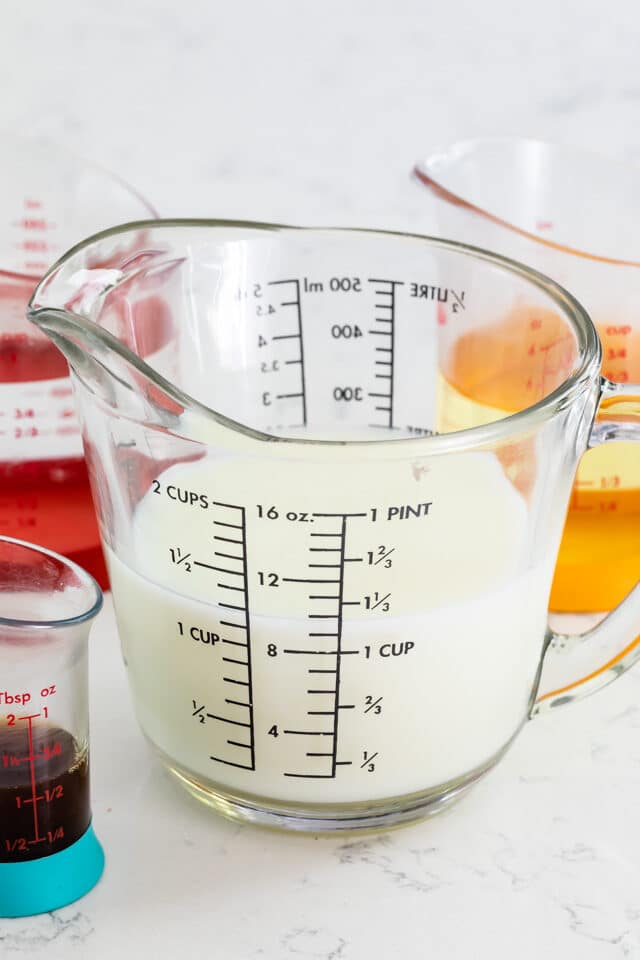Measuring ingredients accurately is the cornerstone of successful cooking and baking. Whether you're whipping up a batch of cookies or preparing a savory stew, precise measurements ensure that your dishes turn out just right. One common measurement that often causes confusion is 3/4 cup. Understanding how to measure this amount correctly can make all the difference in achieving the perfect texture and flavor in your recipes.
In this guide, we will explore various methods to measure 3/4 cup with measuring cups accurately. From converting 3/4 cup to tablespoons to using measuring spoons, we'll cover everything you need to know to master this essential kitchen skill. Let's dive in and discover the best techniques for measuring 3/4 cup without any hassle.
Understanding Measurement Conversions
When it comes to cooking, having a solid understanding of measurement conversions can save you from potential recipe disasters. For instance, knowing that 3/4 cup equals 12 tablespoons can be incredibly useful when you don't have a 3/4 cup measure on hand. This simple conversion can help you adjust recipes with ease, ensuring that your ingredients are measured precisely every time.
Recommended tools like OXO Measuring Cups and KitchenAid Measuring Spoons can also enhance your accuracy in the kitchen. Additionally, utilizing digital resources such as Google Conversion Tool can provide quick answers to any measurement questions you might have. By familiarizing yourself with these tools and conversions, you'll be better equipped to tackle any recipe with confidence.
Mastering the art of measurement conversions not only improves your cooking skills but also allows for greater creativity in the kitchen. You can experiment with different ingredient combinations and adapt recipes to suit your taste preferences, all while maintaining the integrity of the original recipe.
Practical Solutions for Measuring Ingredients
For both dry and liquid ingredients, having the right measuring tools is crucial. Larger measuring cup sets typically include a 3/4 cup measure, making it easy to scoop the exact amount needed for your recipe. However, if you find yourself without a dedicated 3/4 cup measure, there are simple solutions to achieve the same result. For example, you can combine a 1/2 cup and a 1/4 cup measure to equal 3/4 cup.
Another practical approach is to convert 3/4 cup into smaller units, such as teaspoons or tablespoons. This method is especially helpful when working with limited measuring tools. Remember that 3/4 cup is equivalent to 12 tablespoons or 26 teaspoons, providing flexibility in how you measure your ingredients.
When dealing with liquids, a liquid measuring cup is indispensable. These cups often come with markings for various measurements, including 3/4 cup, allowing for precise pouring and measuring. Whether you're measuring milk, water, or oil, a liquid measuring cup ensures accuracy and consistency in your recipes.
Exploring Volume Equivalents
Volume equivalents offer a comprehensive way to understand the relationships between different measurements. For example, knowing that 3/4 cup is approximately 177 milliliters can be beneficial when working with metric recipes. Similarly, recognizing that 1 cup equals 8 fluid ounces or 237 milliliters helps bridge the gap between imperial and metric systems.
Table guides, such as the one provided by the Exploratorium, can serve as valuable references in the kitchen. They outline various volume equivalents, from teaspoons to pints, helping you navigate through complex recipes with ease. By familiarizing yourself with these equivalents, you can confidently convert between different units of measurement.
Moreover, understanding volume equivalents enables you to scale recipes up or down according to your needs. Whether you're doubling a recipe for a larger gathering or halving it for a smaller portion, knowing the relationships between measurements ensures that your dishes remain perfectly proportioned.
Butter Measurement Techniques
Measuring butter accurately is another important aspect of cooking and baking. The Dairy Farmers of Canada provide a handy butter conversion chart that simplifies this process. According to the chart, 3/4 of a block of butter equals 1 1/2 cups or 24 tablespoons. This information is particularly useful when recipes call for specific amounts of butter in different forms.
Using the conversion chart, you can easily switch between volume, weight, and stick measurements, depending on what your recipe requires. For instance, if a recipe asks for 1 cup of butter, you can use half a block or two sticks of butter instead. This flexibility allows for more accurate measurements and better results in your cooking.
In addition to the conversion chart, other kitchen tips, such as softening butter before measuring, can enhance your baking experience. Softened butter blends more smoothly into batter or dough, resulting in lighter and fluffier baked goods. Incorporating these techniques into your cooking routine can significantly improve the quality of your dishes.
Alternative Methods for Achieving 3/4 Cup
If you find yourself without a 3/4 cup measure, there are alternative methods to achieve the same measurement. As mentioned earlier, combining a 1/2 cup and a 1/4 cup measure is a straightforward solution. Alternatively, you can use three 1/4 cup measures to reach the desired amount. Both methods are effective and can be applied to both dry and liquid ingredients.
Liquid measuring cups are particularly advantageous when measuring fluids. These cups often feature spouts and clear markings, making it easier to pour and read measurements accurately. If you're measuring sticky substances like honey or syrup, lightly coating the inside of the measuring cup with cooking spray can prevent the substance from sticking, ensuring a clean and accurate pour.
Ultimately, mastering the art of measuring 3/4 cup involves practice and familiarity with various tools and techniques. By experimenting with different methods and tools, you'll develop a keen sense of measurement that will benefit all your culinary endeavors. Whether you're a seasoned chef or a beginner cook, accurate measurements are key to creating delicious and consistent dishes.

